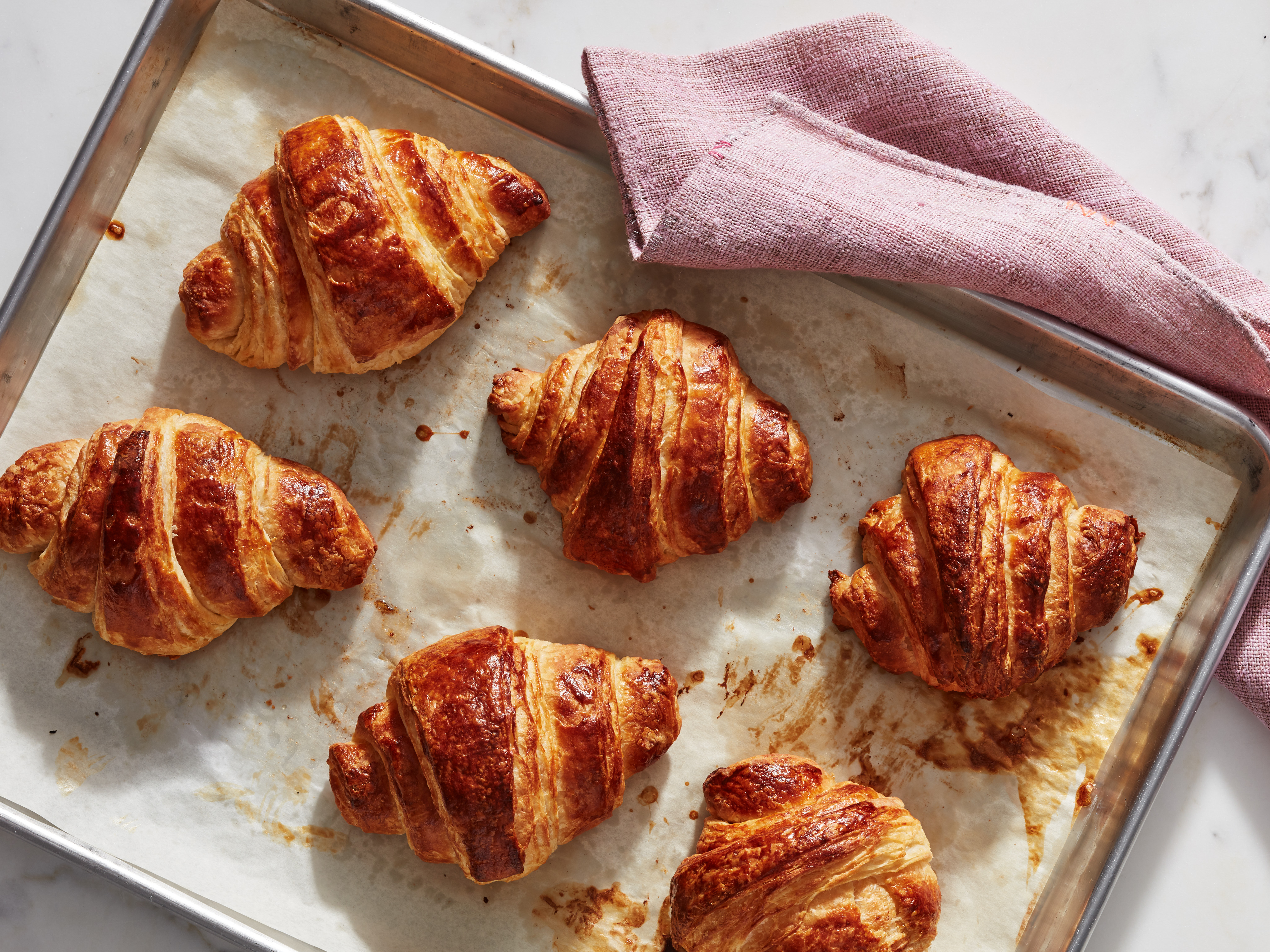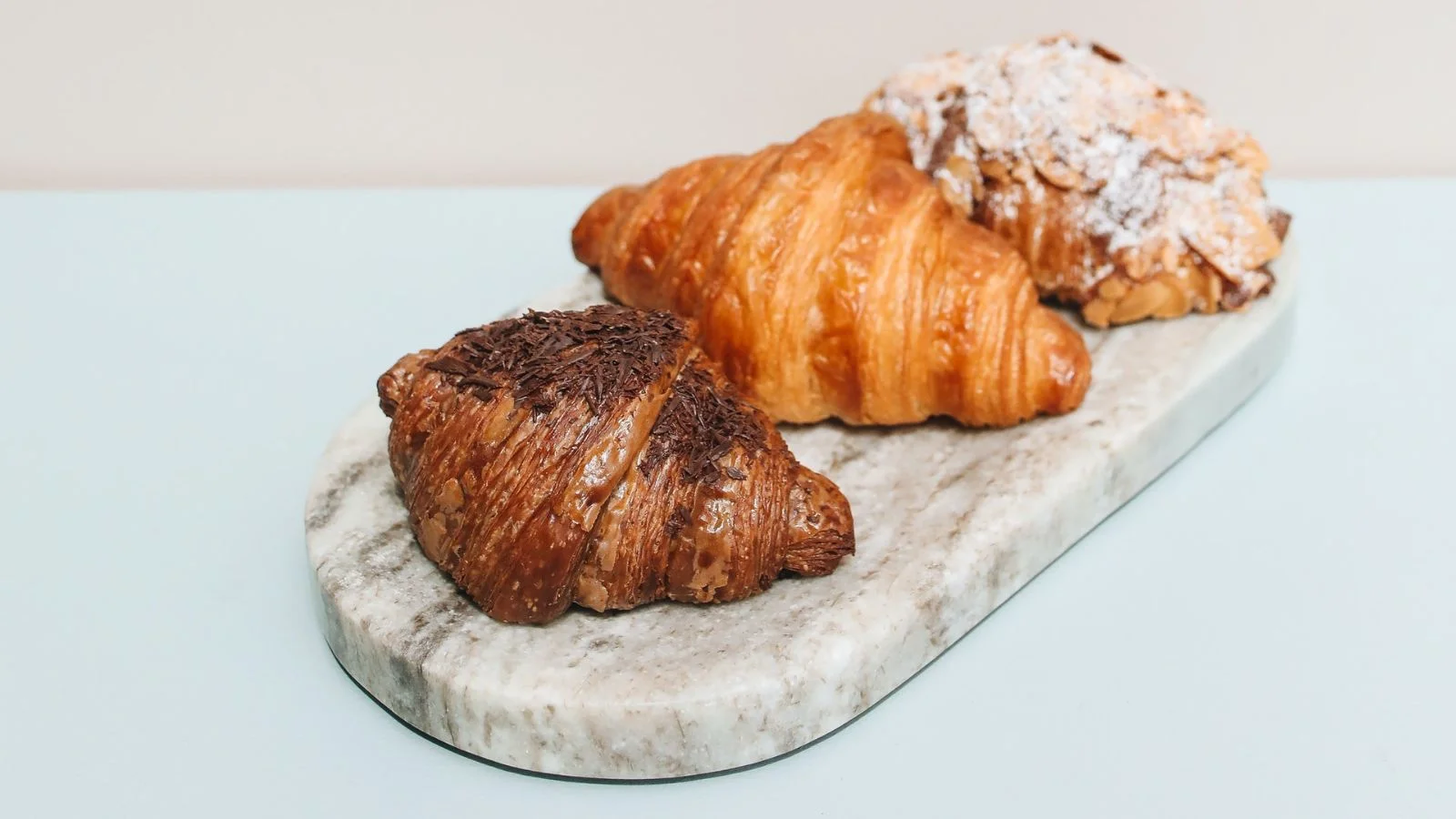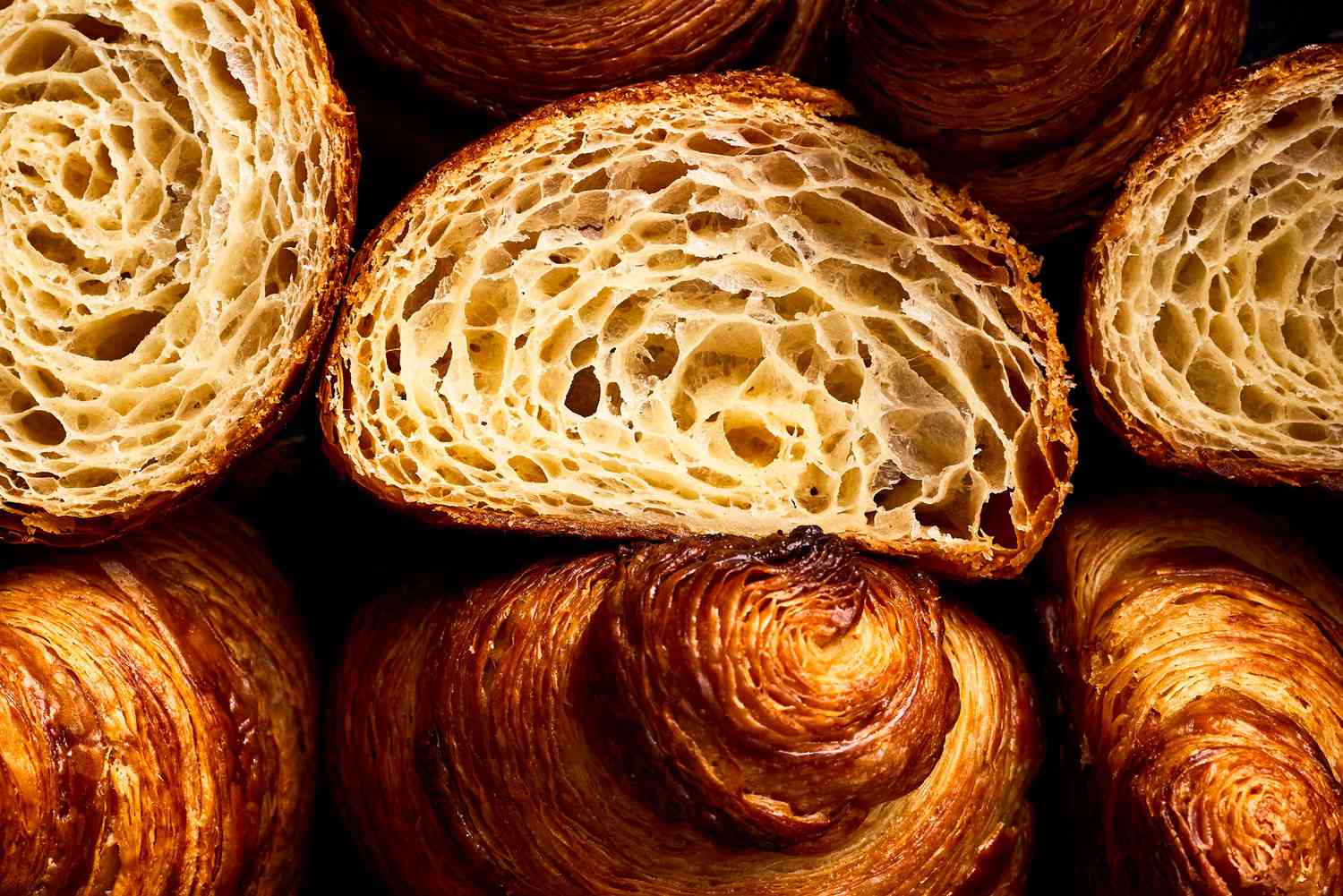





A croissant is a buttery, flaky, Austrian viennoiserie pastry inspired by the shape of the Austrian kipferl but using the French yeast-leavened laminated dough.[1] Croissants are named for their historical crescent shape, the dough is layered with butter, rolled and folded several times in succession, then rolled into a thin sheet, in a technique called laminating. The process results in a layered, flaky texture, similar to a puff pastry. Crescent-shaped breads have been made since the Renaissance, and crescent-shaped cakes possibly since antiquity.[2] Kipferls have long been a staple of Austrian, and French bakeries and pâtisseries. The modern croissant was developed in the early 20th century when French bakers replaced the brioche dough of the kipferl with a yeast-leavened laminated dough.[3] In the late 1970s, the development of factory-made, frozen, preformed but unbaked dough made them into a fast food that could be freshly baked by unskilled labor. The croissant bakery, notably the La Croissanterie chain, was a French response to American-style fast food,[4] and as of 2008, 30–40% of the croissants sold in French bakeries and patisseries were baked from frozen dough.[5] Croissants are a common part of a continental breakfast in many European countries.
Croissants are named for their historical crescent shape and, like other French viennoiseries, are made of layered yeast-leavened dough. The dough is layered with butter, rolled and folded several times in succession, then rolled into a thin sheet, in a technique called laminating (“tourage” in French). The process results in a puff pastry. Here are a few tips below to make proper French croissants.
1 kg flour (T45 in France)
420 g water
50 g eggs
45 g fresh yeast
18 g salt
100 g granulated sugar
20 g honey
70 g butter
400 g beurre de tourage or dry butter (see notes above)
For the egg wash:
300 g egg yolks
30 g heavy whipping cream
In a mixing bowl with a dough hook, add in the flour, water, eggs, fresh yeast, salt, sugar, and honey. Set your mixer to a medium-slow speed and mix the ingredients until you have a homogeneous paste. Then, set your mixer on a higher speed and mix until the paste pulls away from the sides of the mixing bowl. Add the "beurre pommade" (see notes) and knead until the dough comes together. Cover with a damp cloth, then let it rise at room temperature (24 to 25°C/75°to 77°F) for 1 hour. Flatten the dough to knock out the air, then roll it out into a large rectangle according to the width of the beurre de tourage and double its length. Place it in the freezer for 5 minutes, then in the refrigerator for 15 minutes. Place the beurre de tourage in the middle of the dough, fold the dough from each side up and over to cover the butter. Turn the edge of the visible butter to face you. Using a rolling pin, make a double fold: roll from bottom to top until you obtain a thickness of about 7 mm. Draw a small mark in the middle of the dough, fold the top and bottom into the middle, then fold the dough in half again like a wallet. Cover in plastic wrap and place the dough in the refrigerator for 10 minutes. Finally, make a single fold: roll the dough to 1 cm thick, rolling from bottom to top to form a long rectangle. Fold the top over a third of the dough and then fold the bottom over the top. Immediately roll out the dough to a thickness of 3.5 mm to start cutting and forming the croissants.
In a bowl, whisk the egg yolks and cream together.
Cut triangles of 7 cm wide by 35 cm high. Roll the triangles on themselves starting from the base to form the croissants. Let rise for 2 hours at 26°C/77°F. Finishing and baking: Preheat the oven to 175°C/350°F. Place the croissants on a parchment paper-lined baking sheet and use a brush to apply a thin layer of egg wash to each croissant. Bake for 15 min. When nicely golden, remove the croissants and let them cool on a rack.
Beurre pommade is butter that has been let come to room temperature (20 to 30°C / in the 60s F range) so that it is quite soft, like a face cream. Think of it as butter that has softened to the point that it is spreadable.